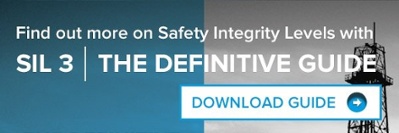Manufacturers of equipment intended for use in potentially explosive locations (and willing to export their products worldwide) must always guarantee product safety. Accordingly, complying with the European ATEX standard may not be enough; compliance with standards and certification schemes recognized even beyond Europe is required.
IECEx is a relevant certification system for products to be used in potentially explosive areas, accepted and recognised by more than 30 international markets. This framework aims at proving the compliance of electrical products intended for installation in hazardous locations with the Ex standards issued by the International Electrotechnical Commission (IEC).
IECEx certification includes among its purposes the simplification of international trade in equipment for potentially explosive locations, providing high safety levels, agreed upon and shared by all countries engaged in the framework according to the consensus principle, while improving the international visibility of the product-assessment process..
With IEC standards as its basis, IECEx, the international certification is more recent than the EU ATEX directives, pursuing the aim of standardizing the compliance of products worldwide. Nevertheless, since Europe has been one of the most expert areas in terms of explosion-safety locations, the first edition of the IEC standards made considerable reference to European ones. Hence, IEC standards have long been just a transcription or better an updated release of previous European standards..
This trend, however, has been changing since Europe shifted its responsibilities within IEC and standards are being discussed at international level.
IECEx and ATEX: some differences
The very first difference between IECEx and ATEX is that no directives can be found in the former; product compliance relies on the standard. Being compliant with IEC is voluntary, a manufacturer's decision, not obliged to comply with it.
The products in IECEx, like those in ATEX, are classified into three different protection levels, although in the IECEx procedures there is no option for internal control of the less safety-rated category. According to IECEx, all products, regardless the category, must be verified and certified by a third-party body.
Furthermore, unlike the ATEX directives, the IECEx framework provides not only for a compliance procedure for products, but also complies with those aimed at ensuring the expertise of personnel and maintenance facilities, addressed to repair and overhaul already installed products.
Certificates are immediately available: their database can be accessed online. Anyone can therefore verify whether a product, or the maintenance personnel made available to a manufacturer, is certified.
Criticalities
The IECEx scheme also has some shortcomings. The main critical issue is to assess compliance with a standard rather than with a directive. A shortcoming, in particular if an innovative technological solution is to be appraised. Should not such a solution present problems as regards the triggering of potential explosive atmospheres - being therefore safe -, the ATEX directive can grant certification of such safety, so long as the essential health and safety requirements are met..
Conversely, the IECEx system does not consider the standard as a compliance indicator, but rather as the very purpose of the certification. Requirements are thus normally to be met in full.
As a result, any innovative technological solution needs to be examined and discussed as part of the legislative process, within specific working groups. Joining such working groups entails commitment in terms of expertise, time and money, being very often only accessible to major companies.
Neither does participation in the working groups nor the analysis carried out in this respect provide any guarantee as to whether the technological solution is actually approved. It will have to be discussed, verified and only after such a procedure it can be included in the wording of the standard. This process often takes several years.
A further shortcoming of the IECEx scheme relates to the lack of an extensive standard framework, as the European one; Legislation covering non-electrical products has only been emerging in recent years, while no specific regulations have been issued yet for particular cases like forklifts, petrol filling stations, protective devices such as flame arresters, vents or other products instead dealt with in Europe.
Conclusions
IECEx certification scheme plays a key role for equipment manufacturers intended to be used in potentially explosive locations. This certification actually serves as a benchmark to those willing to export products, suitable to be used in tough conditions, outside the European Union gaining a domestic certification in one of the Member States far easier.
Such a feature has been making it a rapidly expanding system, increasingly required by manufacturers worldwide, to work in the most effective way in international situations, regardless of its advantages, shortcomings and direct legal effectiveness.


